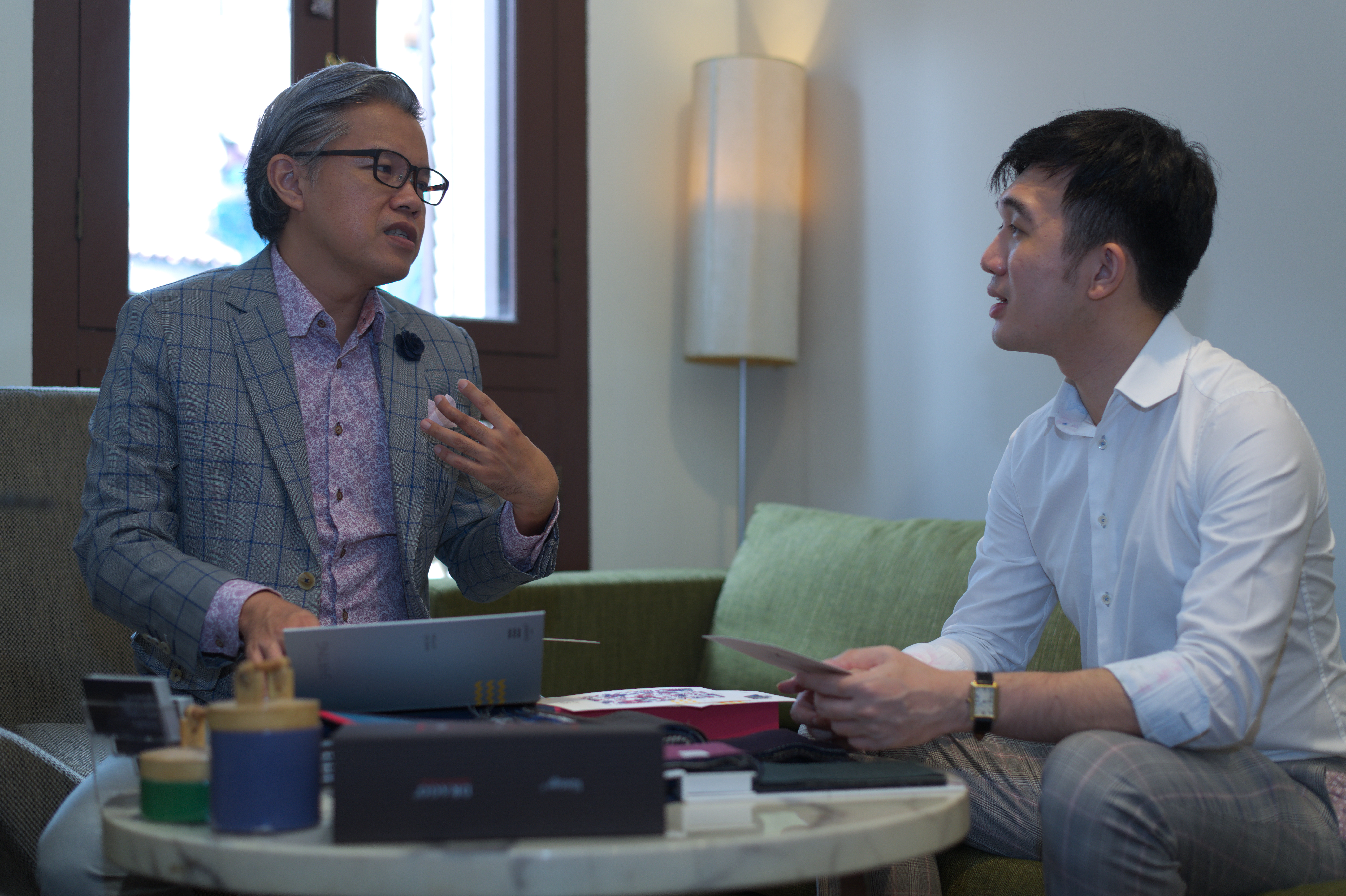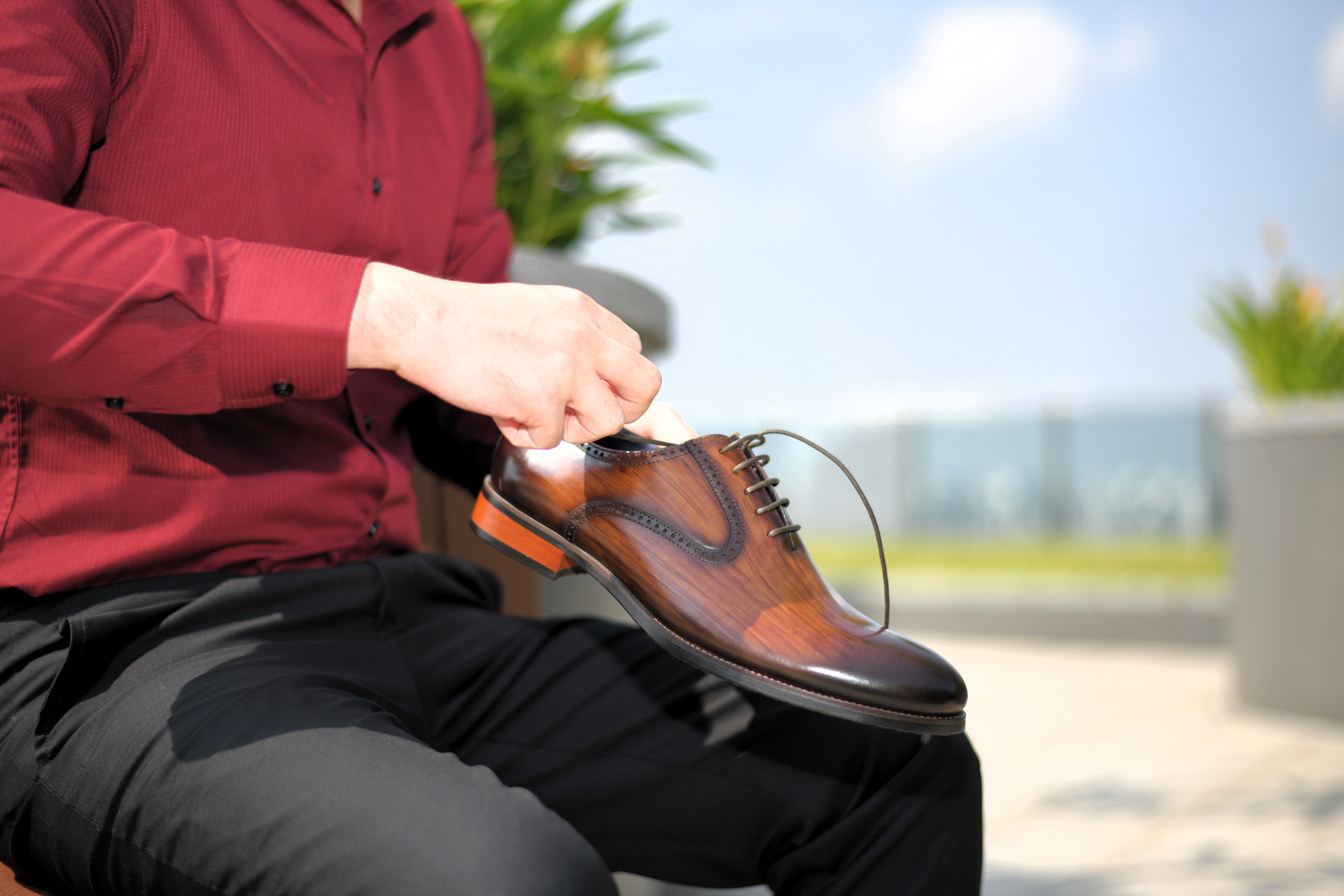In this article, I’ll briefly explain the three main types of shoe construction employed in dress shoes.
As my readers may know, I recently started CustomWelt, which specialises in Goodyear Welted, customisable dress shoes. I’ve since gotten a few messages, asking me what’s so special about Goodyear Welted construction (and why it commands a price premium) as compared to the other shoe constructions. Thus, I’ve decided to write this article, detailing the differences between Cemented, Blake-stitched, and Goodyear Welted constructions. Let’s get into it.
1) Cemented Construction
The most common – and cheapest – method to sole a shoe is the cemented construction.
To put it in layman’s terms, a cemented construction is where the outsole of the shoe is glued on. 95% of all shoes (including most sneakers) are made this way – it’s simply the most economical method.
However, this affordability comes at a cost – literally. With repeated flexing and exposure to moisture (i.e rain), the chemical bonds in the industrial glue will weaken, and therefore the sole will inevitably be dislodged over time.
Still, that’s not to say that cemented dress shoes are terrible – in fact, most of my Arden Teal dress shoes are cemented. The trick is not to overpay for them, as you can re-order another pair when one inevitably spoils. Arden Teal does a great job of offering affordable cemented shoes at just $119 (after the “WAHSOSHIOK” promo code) and uses full-grain Argentinean leather that will patina beautifully over time. If you’re searching for your first pair of dress shoes, or simply don’t need to wear them often, then an affordable, full-grain leather shoe from Arden Teal will suffice.
2) Blake-Stitched Construction
The second option is the Blake-Stitched Construction, which is often seen as the best of both affordability and craftsmanship.
In contrast to cemented construction – which uses industrial glue – Blake-Stitched construction utilises stitching (therefore the name) to bind the insole, upper and outsole together.
Due to its stitched construction, Blake-Stitched shoes are often more flexible than cemented and traditional Goodyear Welted shoes. It’s also more durable than cemented shoes. The downside is its lack of resole ability – resoling Blake-Stitched shoes requires a specific machine, which can be expensive and hard to find. As a result, it is usually more prudent to purchase another Blake-Stitched shoe if your current pair runs out of life. Once again, I’ll recommend Arden Teal’s Blake-Stitched shoes, which go for just $180 (after the “WAHSOSHIOK” promo code). That’s still relatively affordable, and won’t burn a hole in the pocket should you require a new pair down the road.
3) Goodyear Welted Construction
However, the crème de la crème of shoemaking is the Goodyear Welted construction.
Invented in 1869 by Charles Goodyear Jr (therefore the first part of the name), the art of Goodyear Welting has set the benchmark for quality shoemaking for over 150 years. The essential part of Goodyear Welted lies in the welting (the second part of the name), which refers to tying a strip of leather that’s sewn around the shoe, which the outsole is later stitched onto. As such, this allows for several repairs, as the outsole can be replaced multiple times by removing (and later restitching) the stitches.
Aside from easy resoling, Goodyear Welted construction is also renowned for its durability and imperviousness to the elements. It is by far, the most durable method of construction, not just for dress shoes but even Red Wing boots as well. If it’s good enough for boots that trek in the wilderness, it’s good enough for your daily commutes to the office.
Goodyear Welted shoes are also famed for their comfort. As there’s a layer of cork between the uppers and the outsole, the shoe will adapt to your feet and walking posture over time, much like how a full-canvassed jacket will adapt to one’s body posture after repeated wears. This leads to unparalleled comfort in the long run. In other words, Goodyear Welted shoes will likely provide decades’ worth of comfortable wear.
The main drawback to Goodyear Welted shoes is the price – it’s significantly pricier than Blake-stitched shoes. For example, Carmina sells its Goodyear Welted shoes for $500+, with its MTO (made-to-order) offerings starting at $700+. However, CustomWelt’s Goodyear Welted MTO offerings start at only $359 (after the “WAHSOSHIOK” promo code), and come in both large (up to US15) and wide (EE) sizes. That’s still a substantial price premium over Arden Teal’s Blake-stitched shoes, but it’ll be eminently more durable and comfortable.
Conclusion
I hope this article illuminates the differences between the three major types of shoe construction. So, which construction is best for you?
I’ll say that largely depends on your needs and budget. If you have a limited budget and wear dress shoes infrequently, go for a nice pair of full-grain leather cemented shoes. Conversely, if you wear dress shoes frequently but have a limited budget (perhaps you’re a fresh grad in his first job), opt for the compromise – a pair of full-grain leather Blake-stitched shoes. Lastly, if you have a larger budget and wear dress shoes often, choose a pair of artisanal Goodyear Welted shoes. Arden Teal is a good choice for cemented and Blake-stitched shoes, while CustomWelt (shameless self-plug here) is great for made-to-order Goodyear Welted shoes. Readers can use the promo code “WAHSOSHIOK” to enjoy 12% off Arden Teal shoes and 10% off CustomWelt shoes.
P.S: Check out The Shiok Store here – it serves as a curation of my favourite products from my favourite brands.
P.P.S: Do check out the new “Discounts!” page for exclusive discounts for Wah so Shiok readers! More brands will be added very soon – stay tuned!
P.P.P.S: If you haven’t already, do follow my social media channels on Facebook here, on Instagram here, and on Youtube here.
P.P.P.P.S Shiok is a common word Singaporeans use to express admiration or approval. As of 2016, you can find the definition of the word in the Oxford English Dictionary.








































